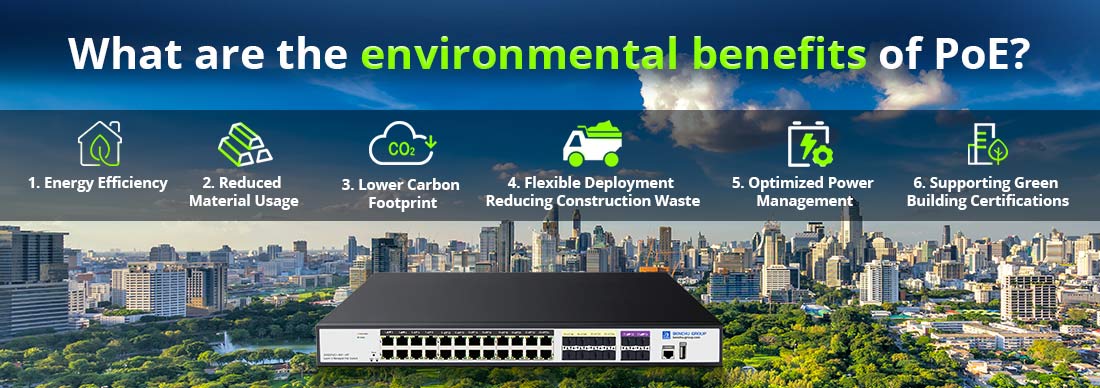
Power over Ethernet (PoE) offers several environmental benefits that can make a significant impact on reducing energy consumption and promoting sustainability:
1. Energy Efficiency
--- PoE delivers both data and power through a single Ethernet cable, reducing the need for separate electrical wiring. This setup minimizes power losses that often occur in traditional electrical installations. As a result, PoE systems tend to be more energy-efficient, contributing to lower overall energy consumption.
2. Reduced Material Usage
--- By combining power and data into a single cable, PoE reduces the need for additional materials such as copper wiring, conduits, and outlets. Fewer materials mean less environmental impact from mining, manufacturing, and transportation processes.
3. Lower Carbon Footprint
--- Since PoE enables the use of energy-efficient, low-voltage devices like IP cameras, LED lighting, and wireless access points, the overall power consumption is reduced. Lower energy consumption directly translates into a smaller carbon footprint for buildings using PoE technology.
4. Flexible Deployment Reducing Construction Waste
--- PoE allows for more flexible placement of devices without the need for dedicated electrical outlets. This flexibility minimizes the need for extensive renovations or additional construction work, which can reduce waste and the environmental impact associated with such activities.
5. Optimized Power Management
--- PoE systems often support smart power management, which allows connected devices to be turned off or put into low-power modes when not in use. This capability helps to further reduce unnecessary energy consumption and enhances overall sustainability.
6. Supporting Green Building Certifications
--- Buildings that incorporate PoE technology can more easily achieve green building certifications such as LEED (Leadership in Energy and Environmental Design), which promotes environmentally friendly construction and energy-efficient systems.
Overall, PoE technology contributes to environmental sustainability by optimizing energy use, reducing material needs, and supporting more eco-friendly infrastructure.